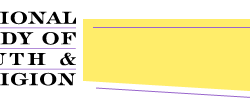|
Beshir, Ekram and Mohamed Rida Beshir. 2025. Muslim Teens: Today's Worry, Tomorrow's Hope: A Practical Islamic Parenting Guide. Beltsville, MD: Amana Publications.
Abd al-`"At"i, Hamm"udah. 2025. Islam in Focus. Falls Church, Va.: World Assembly of Muslim Youth.
Abu Ali, Azhar and Carol A. Reisen. 1999. "Gender Role Identity among Adolescent Muslim Girls Living in the Us." Current Psychology: Developmental, Learning, Personality, Social vol. 18, pp. 185-192.
Abstract: Examined societal influences on gender identity, and beliefs about behaviors and characteristics appropriate for males and females among 96 Muslim adolescent girls (aged 13-18 yrs) living in the US and attending an Islamic high school. Over 75% of the sample characterized themselves as Middle-Eastern or Arab-American. Ss completed a survey in English or Arabic containing background questions, the Bem Sex Role Inventory, the Multigroup Ethnic Identity Measure, and a religiosity scale. Results show that Ss had comparable femininity scores, but higher masculinity scores than normative female samples. Results also indicated that those Ss who had lived in the US for longer periods reported more masculine attributes. Greater sense of belonging to one's ethnic group and greater religiosity were associated with greater femininity. Thus, identification with one's own culture, adherence to religious practices, and exposure to foreign cultural values were related to gender role identity. [Source: PI]
Daley and Elizabeth Grant. 1999. "Muslim Teens Dispel Myths and Stereotypes." New York Amsterdam News vol. 10, p. 20.
Abstract: Presents an interview with three Muslim teenagers on Islam and on stereotypes at the Mosque of Islamic Brotherhood in Harlem, New York City. Includes a discussion on the basic principles of Islam; Kimar religious clothes; Differences in rules for men and women; Stereotyping of Muslims. [Source: AS]
LaHurd, Carol Schersten. 1996. "Public and Private Realities: Women, Youth, and Family Traditions." Word & World vol. 16, pp. 143-150.
Sarwar Sharif, Yasmin Nighat. 1996. "Becoming Muslim and Woman: The Bifurcation of Self and Critical Multiculturalism." Ph.D. Thesis, Miami University, Oxford.
Abstract: This qualitative study examines the factors which contributed to the identity formation of three adolescent Muslim females. These girls were all Muslims, born and raised in the United States. However, their parents were immigrants from different countries. All of the girls, as part of a support group, engaged in dialogue which allowed them to affirm individual and collective identities. (EIlsworth, 1993). This study is positioned within the postmodern multicultural agenda of schooling. (Baker, 1977; Carlson, 1995; McCarthy, 1990; McLaren, 1995; Giroux, 1992). Analysis of the data reveals that the females lived bifurcated lives within the home and the school. They lived within the dominant culture and the culture of home which allowed them to be marginalized and different. (Said, 1978). Popular cultural representations of the Muslim "Other" as well as patriarchy in the home tended to reify their identities and encouraged them to lead bifurcated lives (Mernissi, 1991). One major conclusion of this study is that multicultural education must play a central role in allowing marginalized youth to cross identity borders, affirm their voices, and live multifaceted lives. [Source: DA]
Wortman, Julie A. 1996. "Holding to the Faith: Young Muslim Women." Witness vol. 79.
Pulcini, Theodore. 1995. "Values Conflict among American Muslim Youth." Pp. 178-203 in Muslim Minorities in the West, edited by Syed Abedin and Ziauddin Sardar. London: Grey Seal.
Rashid, Hakim M. 1992. "Secular Education and the Political Socialization of Muslim Children." American Journal of Islamic Social Sciences vol. 9, pp. 387-396.
Alam, Javed and Saeeduzzafar. 1991. "Dependence Proneness in Relation to Prolonged Deprivation." Journal of Personality and Clinical Studies vol. 7, pp. 49-53.
Abstract: Investigated the influence of prolonged deprivation and religious affiliation on the development of dependence proneness. A 2 * 2 factorial design was used in which 1 personality variable (prolonged deprivation) and 1 sociological variable (religion) varied in 2 ways. There were 4 groups of undergraduates (aged 15-28 yrs), with 50 Ss in each group: nondeprived Hindus, deprived Hindus, nondeprived Muslims, and deprived Muslims. Ss completed a measure of dependence proneness. Deprived and nondeprived Ss did not differ with respect to dependence proneness. Muslims were found to be more dependent prone than Hindus. There was no interactional effect of religion and prolonged deprivation on the degree of dependence proneness. [Source: PI]
Barazangi, Nimat Hafez. 1991. "Parents and Youth: Perceiving and Practicing Islam in North America." Pp. 132-147 in Muslim Families in North America, edited by Earle H. Waugh, Sharon McIrvin Abu-Laban, and Regula Burckhardt Qureshi. Edmonton: University of Alberta Press.
Sultan, Talat. 1991. "Educational Formation of American Muslim Youth." Journal, Institute of Muslim Minority Affairs vol. 12, pp. 520-526.
Waugh, Earle H., Sharon McIrvin Abu Laban, and Regula B. Qureshi (eds.). 1991. Muslim Families in North America. Edmonton: Univ of Alberta Pr.
Abstract: Preface. Introduction. Family and religion among Muslim immigrants and their descendants, S Abu-Laban. The Muslim family: the scriptural framework, S Qureshi. North America and the adaptation of the Muslim tradition: religion, ethnicity, and the family, E Waugh. Islamic identity, family, and community: the case of the Nizari Ismaili community, F Ross-Sheriff and A Nanji. The Muharram majlis: the role of a ritual in the preservation of Shia identity, V Schubel. Parents and youth: perceiving and practicing Islam in North America, N Barazangi. Marriage and divorce among Muslims in Canada, W Hogben. Marriage strategies among Muslims from South Asia, R Qureshi. Family stability among African-American Muslims, N Akbar. Muslims in North America: mate selection as an indicator of change, I Ba-Yunus. Yemeni and Lebanese Muslim immigrant women in southeast Dearborn, Michigan, B Aswad. Palestinian-American Muslim women: living on the margins of two worlds, L Cainkar. Reflections on Islamic tradition, women, and family, M Waldman. Epilogue: prospects and assessments. [Source: RI]
Barazangi, Nimat Hafez. 1990. "The Education of North American Muslim Parents and Children: Conceptual Change as a Contribution to Islamization of Education." American Journal of Islamic Social Sciences vol. 7, pp. 385-402.
Jahan, Qamar. 1990. "Study of Communal Prejudice as Related to Adjustment." Manas vol. 37, pp. 31-39.
Abstract: Tested the hypothesis that maladjusted persons are more prejudiced than well-adjusted persons. A 2 * 2 factorial design was used in which adjustment (good adjustment or maladjustment) and religion (Hindu or Muslim) varied. 850 female undergraduates (aged 15-20 yrs) completed the Bell Adjustment Inventory and a prejudice scale. Adjusted Ss were less prejudiced than maladjusted Ss, and Muslims were more prejudiced than Hindus. Hindu Ss were significantly better adjusted than Muslims, and there was an interactional effect of adjustment and religion on the degree of communal prejudice. [Source: PI]
Barazangi, Nimat Hafez. 1988. "Perceptions of the Islamic Belief System: The Muslims in North America." Ph.D. Thesis, Cornell University, Ithaca.
Abstract: Muslims in North America want to transmit the Islamic ideological and cultural heritage to their children, but attempts at developing curricula to do so have not always been successful, in part because of failure to understand the Muslims' perceptions of Islam. The problem has two aspects: differences among adult Muslims with different ethnic origins and interpretations of the Islamic view, not all of which are derived from Al Qur'an, and differences in the views of immigrant parents and their North American-reared children. The children may participate in the North American culture to a greater extent than their parents and are constantly faced with the need to accommodate potentially conflicting points of view. Effective educational planning requires determination of nature and extensiveness of parents' and children's different interpretations and how they are reflected in the practice of Islam. The basic assumption is that unless educators of Muslims identify and reconcile the ambiguities in the perception and practice of Islam by American and Canadian Muslims, a culture rather than an ideology intended to shape character and guide conduct will be transmitted to the next generation. Forty Muslim families from varied ethnic backgrounds were interviewed and tested with a 70-item questionnaire. The findings indicate that parents and youth have significantly different levels and natures of perception. Parents have higher levels of perception for the central concept of Islam, Tawhid, in an abstract form, whereas youth tend to emphasize the tertiary concepts of Islam, human interrelationships, in the context of Western values. These findings may explain (1) the difficulties parents encounter in effectively transmitting the Islamic belief system to their children, and (2) the youths' inability to make ideological distinctions between the Islamic and the Western systems. The implications of these findings are incorporated in a set of recommendations for the design of formal and informal curricula for both parents and youth. These curricula are premised on two intertwined assumptions: (1) there is no separation of faith and world order in Islam, but (2) Muslims in North America are faced with the need to maintain faith and their belief system while integrating with the Western (secular) society. [Source: DA]
Oyefeso, M. A. 1988. "Religion and Duty in Islam: Leaders, Youth and Women." Pp. 298-310 in Nigerian Studies in Religious Tolerance, edited by C. S. Momoh, M.S. Zahradeen, and S.O. Abogunrin. Ibadan: Centre for Black and African and Civilization (CBAAC) and National Association for Religious Tolerance (NARETO).
Rashid, Hakim M. 1988. "The Socialization of Muslim Children in America: Toward a Conceptual Framework." American Journal of Islamic Social Sciences vol. 5, pp. 205-217.
Ross Sheriff, Fariyal. 1986. "Cultural Conflicts Experienced by Indo-Pakistani Muslim Youth in the United States." Asian American Psychological Association Journal pp. 51-54.
Abstract: Examined cultural conflicts experienced by 56 Indo-Pakistani Muslim youth (aged 13-29 yrs) and evaluated the impact of a program, an experience in Islamic living, designed to develop and preserve Muslim identity. [Source: PI]
Singh, Rajendra. 1984. "Adjustment Patterns of Adolescents as a Function of Religious Orientations." Child Psychiatry Quarterly vol. 17, pp. 104-108.
Abstract: Administered an adjustment inventory to 100 Hindi and 100 Muslim 14-28 yr old urban males to study the relationship between religious orientations and adjustment patterns. Results show no significant differences in any area of adjustment (home, social and emotional health, or school adjustment). It is suggested that assimilation of the 2 groups results in similar adjustment patterns. [Source: PI]
Kureshi, Afzal and Rahat A. Khan. 1981. "Fear of Failure Motivation as Related to Certain Social Variables." Journal of Psychological Researches vol. 25, pp. 89-93.
Abstract: Eight pictures with marked fear of failure (FOF) cues were used to elicit themes of FOF from 128 16-24 yr olds. Ss were paired on age (16-29 yrs/20-24 yrs), sex (male/female), religion (Muslim/Hindu), and socioeconomic status (SES; upper/middle). Analysis showed that Muslims, older Ss, and upper SES Ss had a greater FOF than their counterparts. There were no sex differences on FOF scores. [Source: PI]
Kureshi, Afzal. 1977. "Tat Study of the Motives of Hindu and Muslim Adolescents." British Journal of Projective Psychology and Personality Study vol. 22, pp. 1-5.
Abstract: Examined differences between Hindu and Muslim adolescents in terms of achievement, affiliation, power, aggression, and security motivation. The TAT responses of 2 groups of adolescents, matched for age, sex, and socioeconomic status were analyzed. Results indicate that among Hindu adolescents security is the dominant motive and affiliation is least important. For Muslim adolescents affiliation is the strongest motive and aggression is the weakest. Differences with respect to age, sex, and socioeconomic status were also found. [Source: PI]
Labban, I, M. Allam, M. Ahmad, and A. Kanoun. 1971. "Four Articles on Muslim Youth - in English." Pp. 351-403 in Fifth Conference of the Academy of Islamic Research, edited by M. Bisar. Cairo: General Organization for Govt. Print. Offices.
|



